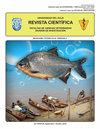去势猫血液学参数及氧化应激因子水平变化的研究
IF 0.3
4区 农林科学
Q4 VETERINARY SCIENCES
Revista Cientifica-Facultad De Ciencias Veterinarias
Pub Date : 2023-09-25
DOI:10.52973/rcfcv-e33290
引用次数: 0
摘要
本研究旨在确定去势手术对猫血象和白象值以及血清组织氧化应激因子水平的影响。研究评估了19只去势猫术前和术后第10天血象/白象值和总氧化剂/抗氧化能力。当血象和白象值检查时,确定嗜酸性粒细胞数量有统计学意义的增加(P<0.05)。虽然白细胞(WBC)、中性粒细胞和淋巴细胞水平升高,红细胞(RBC)和红细胞压积(HCT)水平下降,但差异无统计学意义(P>0.05)。检测猫血清组织中氧化应激因子水平时,发现总抗氧化状态(TAS)降低,总氧化状态(TOS)升高,但结果差异无统计学意义(P>0.05)。综上所述,本研究确定,除嗜酸性粒细胞数量外,阉割过程对猫血象和白象参数以及血清组织中氧化应激因子水平没有显著影响。本文章由计算机程序翻译,如有差异,请以英文原文为准。
Investigation of changes in Hematological parameters and levels of Oxidative stress factors in castrated Cats
This study was carried out to determine the effect of castration procedure on hemogram and leukogram values and the levels of oxidative stress factors in serum tissue in cats. Preoperative and postoperative 10th day hemogram/leukogram values and total oxidant/antioxidant capacities of 19 castrated cats were evaluated in the study. When the hemogram and leukogram values were examined, it was determined that there was a statistically significant increase in the amount of eosinophils (P<0.05). Although the increase in white blood cells (WBC), neutrophil and lymphocyte levels and the decrease in red blood cells (RBC) and hematocrit (HCT) levels were remarkable, it was not found to be statistically significant (P>0.05). When the levels of oxidative stress factors in the serum tissues of the cats were examined, it was determined that there was a decrease in the total antioxidant status (TAS) and an increase in the total oxidant status (TOS), but the difference in the results was not statistically significant (P>0.05). In conclusion, in this study, it was determined that the castration procedure in cats did not cause a significant difference in hemogram and leukogram parameters and the level of oxidative stress factors in serum tissue, except for the amount of eosinophils.
求助全文
通过发布文献求助,成功后即可免费获取论文全文。
去求助
来源期刊
CiteScore
0.20
自引率
0.00%
发文量
66
审稿时长
18-36 weeks
期刊介绍:
Information not localized

 求助内容:
求助内容: 应助结果提醒方式:
应助结果提醒方式:


